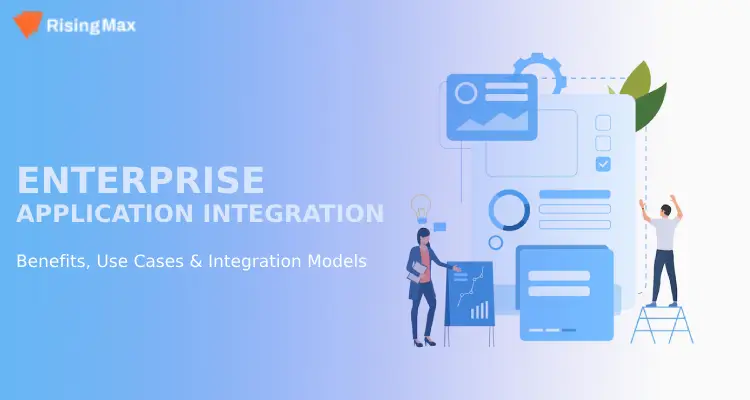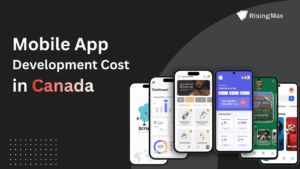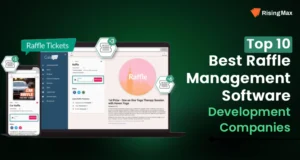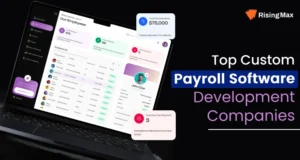In 2024, the enterprise application integration market size is projected at 15.28 billion, while in 2029, it is expected to hit USD 31.61 billion by 2029 at a CAGR of 15.65%.
Rapid growth in EAI technology to meet the rising integration demand in the enterprise often leads to arguments about what EAI is and how a small difference between one proprietary approach and another makes it the only viable solution.

Stay ahead in the league with seamless application integration. Contact our team now!
In this blog, understand the evolution of EAI. With a brief history of the origins of EAI, this blog covers the key benefits of EAI, integration models used in EAI, and use cases.
Origin Brief of Enterprise Application Integration (EAI)
Since the inception of EAI in the early 2000s, the central problem it attempts to solve has been ancient. EAI is an approach that provides interoperability between multiple disparate systems, leading to a typical enterprise infrastructure.
Entrepreneurs have ample systems and applications that offer various services the company depends upon to conduct its daily operations. A single business might use separate systems developed, licensed, or in-house by a third-party vendor to manage its customer relationships, employee information, supply chain, and business logic.
In EAI theory, running a business by breaking the task into smaller functionalities permits simple implementation of the newest technological advancements in quick adaptation to changing business needs. To gain benefits, organizations must implement technologies that resolve the problems presented through this architecture:
Interoperability: Different elements of the infrastructure may utilize operating systems, languages, and data formats that prevent connection via a standard interface.
Data Integration: The distributed system must be functional for a modular. It is a standard method of handling data flow between systems and applications to enforce consistency across the database.
Rigidness, Scalability, and Stability: Integration solutions must be highly stable, robust, and scalable as they hold a modular infrastructure together.
What is Enterprise Application Integration (EAI)?
EAI confines the technologies and procedures that foster the automated exchange of information between enterprise applications. Different departments in a large enterprise have distinct applications for tasks like payroll management, customer relationship management, and enterprise resource planning. It leads to data silos. EAI supports data synchronization so businesses can automate their processes and boost productivity. Data flows freely between applications without creating essential application or database code changes.
Ready to integrate robust EAI solutions into your business system?
Leveraging innovative service-oriented architectures and order processing solutions, RisingMax delivers end-to-end industry-specific enterprise application solutions for different industries – enabling companies to improve performance and increase efficiencies.
Fundamental Concepts of Enterprise Application Integration
A few concepts or elements must be in place to link more applications to work together amicably. These consist of:
Data Mapping: The mapping process is imperative as it determines how to transfer data, making it easier to evaluate, group, and export afterward. For example, when a customer fills out a contact form in one application, information is mapped to comparable fields in other apps.
Event-driven Actions: When an event happens in a batch of connected applications, such as a piece of data uploaded, it triggers one or more actions.
APIs: Application Programming Interfaces (APIs) are collections of rules or procedures stipulating how different software pieces must communicate. They are omnipresent since they tap into specific data formats to permit developers to quickly access the functionality of other applications.
Benefits of Enterprise Application Integration (EAI)
The advantages of EAI range from removing unnecessary work through process optimization and even reducing costs. Below are the top seven benefits of EAI.
Smooth Business Monitoring: EAI is an impeccable way to get complete control of your company. It is due to the improvement in information management, and it offers a complete vision, making it possible to know what emerges. The network of connections, ranging from software information to aspects relevant to employees when you own a company or occupy a higher position, is easy to control and manage.
Simple Business Processes: The one thing in which EAI technologies stand out is in the streamlining and simplifying of company processes. Whether multiple applications are asynchronous or the IT structure is complex, the process is simple to justify.
Cost-effective Investments: EAI technologies are a great help for cost reduction within the company. For instance, integrating new and old software requires fewer investments as there is no need to delete the former. Also, integrating business applications helps generate new services and products to implement them internally and externally. It leads to huge savings in the long run.
Reliable Information Exchange: The information exchange is much higher when integrating different parts of a company and their respective applications and IT structures. All company employees can access the data and software utilized here. It prevents information duplication, so the structure works better and effectively.
Reduced Time and Efforts: Integrating different software systems permits concentrated business information, leading to a simple job for every employee. It reduces the time and effort to perform tasks. Irrefutably, EAI allows large-scale tasks to be accomplished in less time. The company works optimally, eradicating unnecessary tasks. It enhances the company’s production and the ability to monitor business problems.
Competitive Advantage: With the implementation of EAI technologies, it is possible to improve competitive advantage and build opportunities compared to competitors. Business integration is pivotal in taking the lead for those who apply it. EAI technologies help resolve problems, increasing production efficiency. It leads to a competitive advantage.
Advanced Processes Adaptation: With EAI, it is simpler to track and analyze business procedures to track and evaluate them to understand how they work and control them. It gives different analysis models that help administrate every operation. EAI technologies adapt to any process, implying they can always help the company with monitoring and analysis.
Enterprise Application Integration is an excellent way to control any business and make it more productive. Technology enhancement seems unstoppable, so using them for the business process is crucial as they help it adapt. EAI technologies help companies reach new levels. Dynamics business central consultant can help in integrating applications for streamlining business process and monitoring business operations. Thus, it is essential to consider them.
How Does Enterprise Application Integration Work?
EAI technology utilizes business rules to streamline workflows and converge multiple applications. You can approach enterprise application integration system models as mentioned below.
Point-to-Point: This integration is a conventional form of EAI that builds connections between two endpoints. It extracts data from one application and shifts it to another. If required, you can transform the data during the data processing to ensure that endpoints consume it. However, point-to-point connections don’t feature high scalability because of the need to connect every application pair directly, which requires sharing data.
For instance, developers must retain 45 unique connections between each application with ten applications. Nevertheless, they work well with smaller systems.
Hub-and-spoke Integration: It is a core hub that encourages data distribution to numerous connected applications. Every application can send information to the hub that transforms, demystifies, and shares data with other applications. A hub-and-spoke integration as a communal system provides high management and visibility efficiency. It eradicates the need for point-to-point reliances, lowering the required connections.
For instance, ten applications ask for ten connections (spokes). This model diminishes complexity and introduces a single point of failure. There might be a disruption in the functioning of all integrated applications if the hub encounters issues.
Service-oriented Architecture (SOA): It makes software elements as reusable as possible. It decays business procedures into individual services with standard interfaces and underlying functionality and permits software elements to interact. Major components in SOA architecture include:
- Services
- Service registry where services are listed
- Enterprise service bus (ESB) simplifies communication between services.
The ESB can connect, mediate, and monitor interactions between different services. Though all SOA implementations don’t use ESB, it is directly beneficial in complex systems where many services must communicate scalable, flexibly, and defensible.
Microservices Architecture: Microservices is another flexible architecture that extends SOA by diminishing service dependencies. An individual service might encompass multiple business domains or functionalities in a typical SOA, serving broad purposes for different customers. Microservices design cloud-native solutions that boost the benefits of moving enterprise systems to the cloud. They need additional tools and skills to enforce- abilities that all organizations may not have.
Unlock data-driven agility across your system. Let RisingMax be your technology ally. Let’s connect!
Unlock data-driven agility across your system. Let RisingMax be your technology ally. Let’s connect!
Use Cases of Enterprise Application Integration
EAI seeks to simplify complex digital structures and enhance business agility. It connects divergent systems to boost collaboration. Integration permits many tools, systems, and services to complete operational tasks. Below are a few examples:
Order Processing: One can use EAI to connect eCommerce, CRM platforms, and inventory. Suppose a customer places an order. The stock available data changes automatically with an EAI system in place while transferring order details to the dispatch center. Customers get notifications throughout the process.
Marketing Automation: Using EAI lets you connect marketing services into one central hub. You can incorporate the financial and creative side of marketing to ensure high data efficiency and availability. Also, you can automate the marketing services payments and transfer invoices to your financial records.
Project Management: EAI tools can connect your project management and human resource systems like Paylocity HR. You can assign responsibilities, schedule projects, include financial reporting modules, and track task progress in one place. EAI helps simplify complex management structures.
Enterprise Application Integration (EAI) Services
The experts use enterprise application integration techniques to address business challenges across hybrid, cloud, and on-premises software deployments.
You can harness multiple benefits of enterprise application integration with the following EAI services.
Integration Consulting: EAI consulting helps you evaluate the right project requirements and choose the appropriate technologies for integration. The experts analyze which components need integration to make your app function better.
Integration Optimization: Developers aim to deliver optimized solutions for your enterprise applications. They ensure that your application is more secure, lightweight, protected, and less resource-intensive with feasible optimization.
Integration Support: With application testing and support services, experts work dedicatedly to resolve existing integration issues and resolve them well before a final launch.
The developers at RisingMax extend their support throughout the mobile application development to prevent major issues.
To Sum Up
EAI has appeared as an important instrument for improving an organization’s operational efficiency. It monitors and incorporates different software applications, facilitating a cohesive ecosystem across on-premises and cloud platforms. Moreover, RisingMax’s rigid enterprise automation abilities empower organizations to maintain a competitive edge, ensuring they stay ahead of their rivals.
You know enterprise application integration and understand that executing an EAI system helps you gain unified access to your company’s data in real time. It gives every application a consistent look and feel, moving business rules implementation to the EAI instead of repeating them in every new software.
Approaching a complex initiative like EAI emphasizes the technical and human sides. Consult RisingMax, which helps you select the best-suited EAI architecture, consider your organization’s specifics, such as legacy systems, and keep scalability in mind.
Connect with us now and pave the way for a more effective and flawless business journey!











